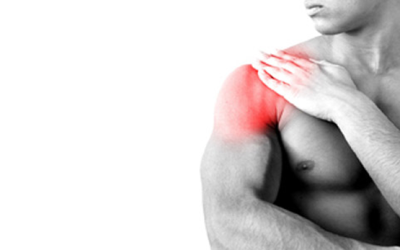The recent so-called fight of the century between Manny Pacquiao and Floyd Mayweather was covered in controversy afterwards by the revelation that Pacquiao fought with a rotator cuff tear. Did that give Mayweather an unfair advantage? Should they schedule a rematch so they can both fight on a level playing field? How would an injury to the rotator cuff affect your ability to box? Let’s begin this query with some basics.
What exactly is the rotator cuff?
Contrary to popular conversation, the rotator cuff is not a “cup”, or a single muscle. The rotator cuff is comprised of 4 muscles that connect the upper arm bone (humerus) and the shoulder blade (scapula). One muscle is located in the front (subscapularis), one on top (supraspinatus) and two more in the back (infraspinatus and teres minor). The later three muscles begin on the back side of scapula, and join into a common tendon that attaches at the outer edge of the shoulder, at about the same place where you find the seam on a dress shirt. This tendon is the most common site for strains and tears. Like the seam on your shirt, the rotator cuff keeps the arm connected to the rest of the body. The supraspinatus muscle functions throughout all aspects of raising your arm, so it is vital to reaching and punching. Manny probably didn’t feel quite right throwing jabs with his shoulder if his cuff was torn.
Why do we injure the rotator cuff?
As we get older our muscles become less elastic and more fibrous, and tend to thin out. This aging process makes the rotator cuff more prone to tearing. The tendon is in a vulnerable location as well, highly affected by posture, body mechanics and spinal health. A number of factors can speed up the process of rotator cuff breakdown. Years of straining our shoulders through throwing sports, overhead work, or even gardening might also set the stage for breakdown. There was speculation that Pacquiao injured his shoulder several weeks before the fight while training, so he may have had to wrestle with knowing about a potential disadvantage with the fight of his life looming.
How do we know when we have an injury?
Diagnosing a rotator cuff strain can be as simple as lifting your arm. If it hurts to raise it sideways, you may have strained your cuff. Diagnosing a tear in the rotator cuff is not as simple. An MRI may show whether one of the muscles in the cuff is torn completely through, but a partial tear may or may not show up. Partial tears are often debilitating and progress to full tears without proper treatment. According to reports, Pacquiao had a full thickness tear in his right rotator cuff.
Can a rotator cuff tear heal itself?
Not usually. It does not automatically mean you need surgery, however. With physical therapy and activity modifications you may be able to regain your prior level of function. I have worked with a number of people who have been told they tore one or all of their rotator cuff muscles, and are getting along just fine. They aren’t throwing punches on a regular basis for $180 million, however.
If you think you may have injured your rotator cuff, contact your physical therapist or doctor. They can help you choose the best course of action for your shoulder.


My rotator cuff has been torn and it’s been hurting for almost a year. It got better than before but it’s still no completely healed
I have a rotator cuff tear I my right shoulder. Now my right shoulder is so much worst . I think that I have a full year in my right shoulder. I have had ink put into shoulder to see actually what’s wrong . They are so swollen and sore most days . Now my right arm and shoulder hurt so much that have to use a sling or hold my arm up .